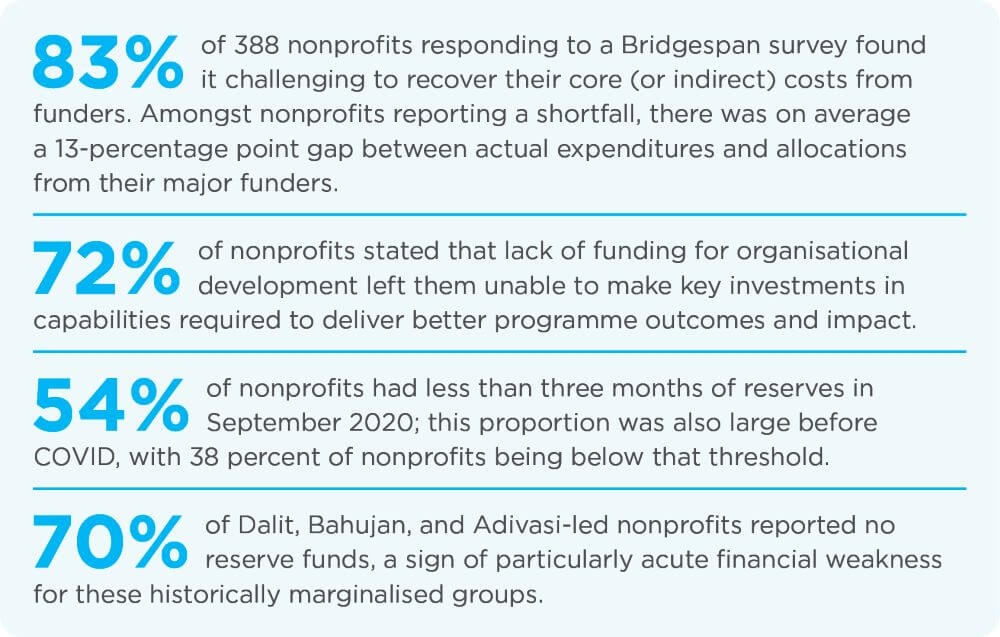Introduction
Funders and their nonprofit partners share a commitment to making progress on some of society’s most pressing problems. Yet, while many funders back programmes that are making a big difference for communities and the environment today, they have a huge opportunity to amplify that impact by also investing in their grantees’ organisational strength and resilience.
That means covering core costs associated with shared administrative and support functions, supporting organisational development (OD) initiatives like strategic planning and technology upgrades, and backing efforts to advance financial resilience such as contributing to reserve funds. Today, chronic underfunding of nonprofits’ true costs blunts the impact funders and nonprofits strive for.
The Bridgespan Group, along with five anchor partners, launched the Pay-What-It-Takes (PWIT) India Initiative in 2020 to understand the extent of this underfunding problem in India and seek solutions.1 What we found makes a compelling case for change:2

We spoke with several funders who have embraced practices that strengthen nonprofits in India. Their efforts guided us in developing a set of PWIT principles all funders can adopt to support strong, resilient nonprofit partners:
Develop multiyear funder-nonprofit partnerships
Pay a fair share of core costs
Invest in organisational development
Build financial resilience
Embed diversity, equity, and inclusion in grantmaking
Aligning funder operations and grantmaking practices with these principles won’t be easy. Chronic underfunding is a complex issue, and all stakeholders need to work together to solve it. But funders hold the purse strings, which puts responsibility for leadership in their court.
But where to begin? There isn’t one set way to “pay what it takes.” Rather, funders have the flexibility to tailor their own approaches. While some funders start with unrestricted, flexible funding as their cornerstone, for many, the process begins with gradual steps that help build mutual trust with grantees, paving the way for more expansive forms of true-cost investment. This guide offers funders a menu of ways to live into these principles.
Pay-What-It-Takes Terminology
- Programme costs: Expenses directly attributable to a specific project. Also referred to as direct costs.
- Core costs: Shared administrative or support-function expenses not tied to a specific programme (e.g. salaries of nonprogramme employees, rent and utilities for a central office, human resources, finance and accounting, fundraising, communications, technology, and measurement and evaluation). Also known as indirect costs and nonprogramme costs.
- Organisational development: Investment in institutional growth and sustainability, such as in strategic planning, leadership and talent development, financial management, fundraising, measurement and evaluation, and technology. Organisational development can overlap with core costs. For instance, an initial development investment in technology could become a recurring core cost in subsequent years.
- Financial resilience: A nonprofit’s ability to sustain its operations over the long term and withstand external stresses and shocks. Nonprofits cultivate financial resilience by developing prudent financial plans, monitoring financial performance, diversifying their funder base, and building reserve funds.
- True costs: Includes core costs, organisational development costs, and reserve funding, along with programme costs.







